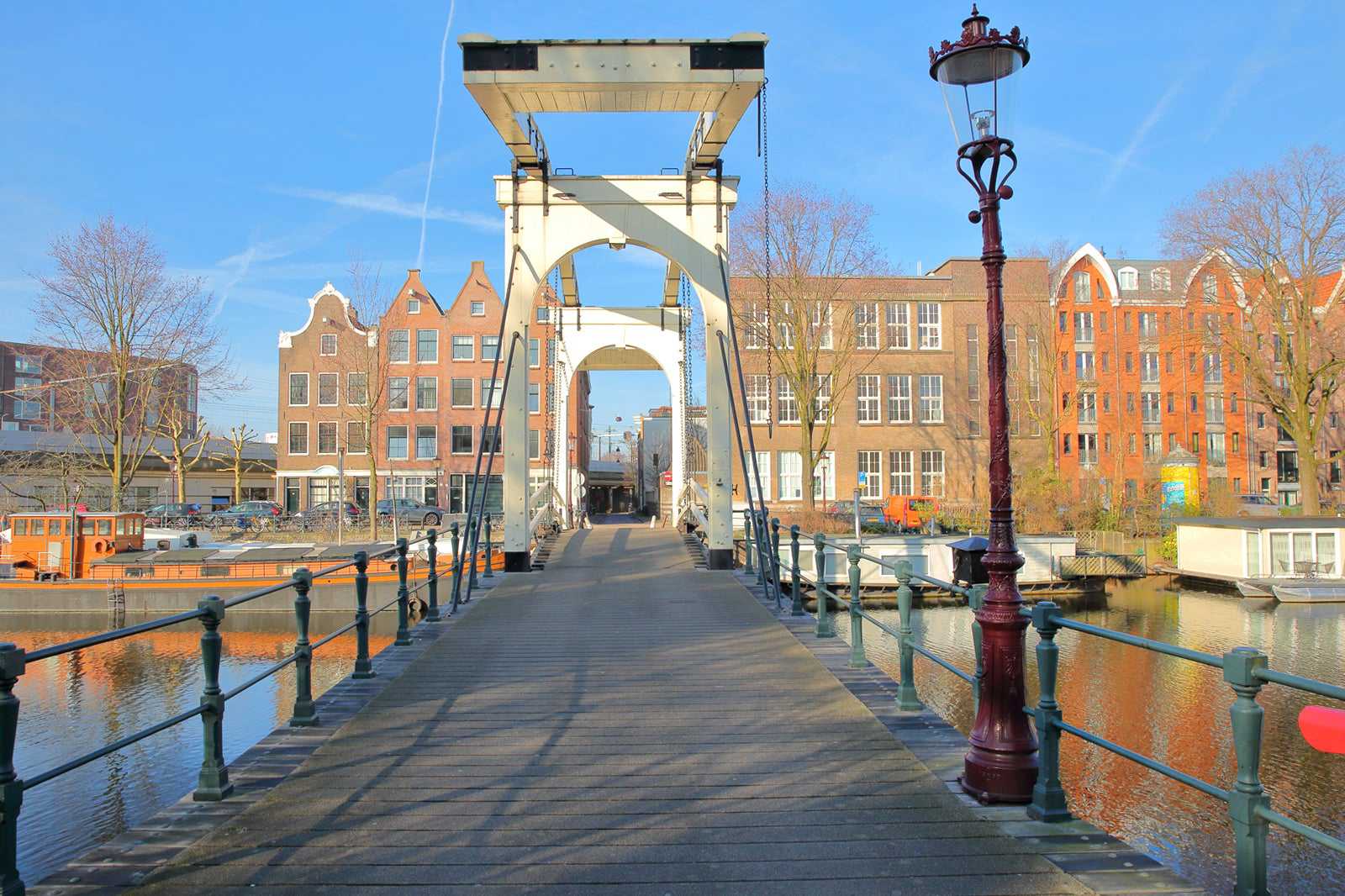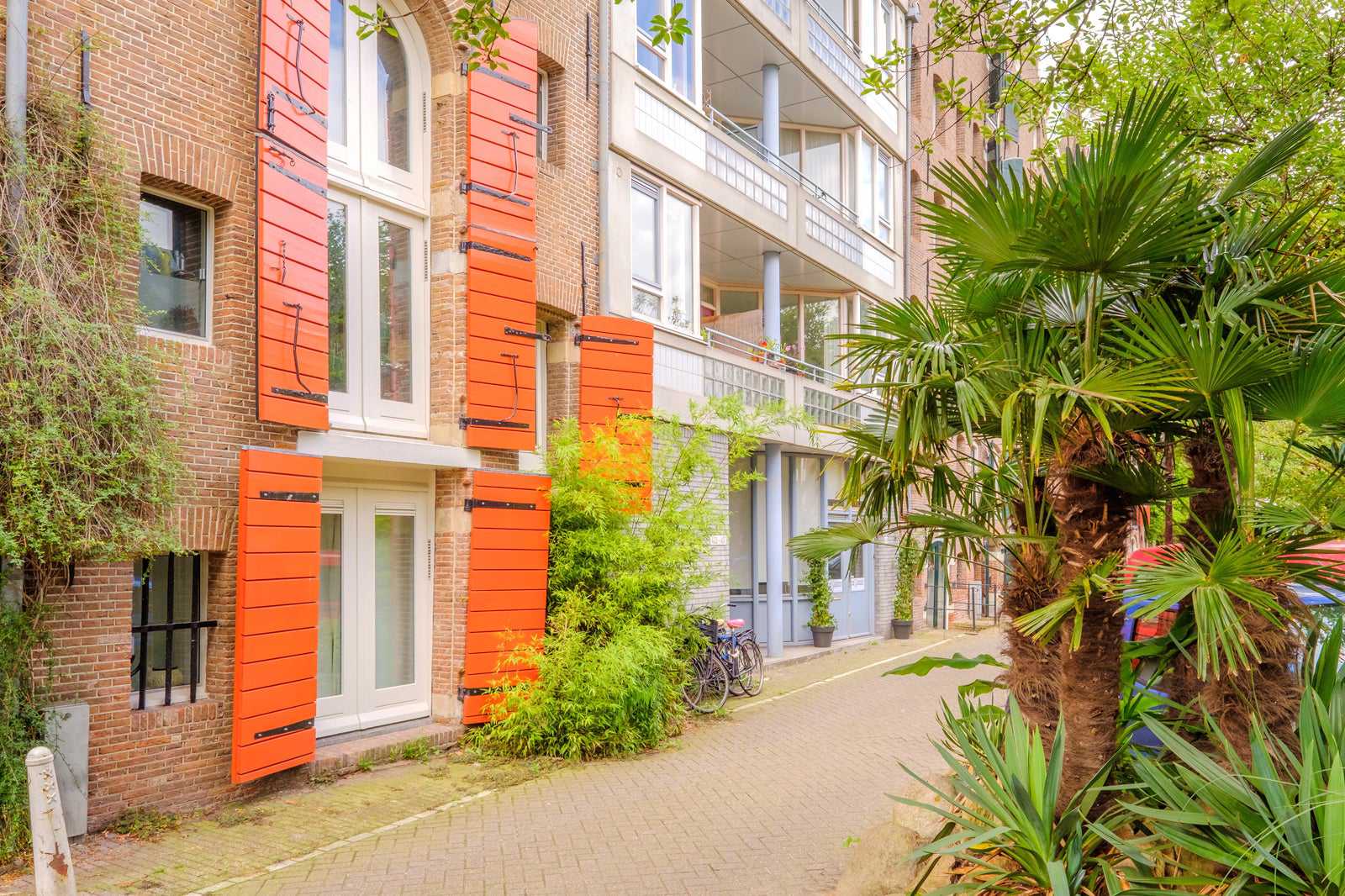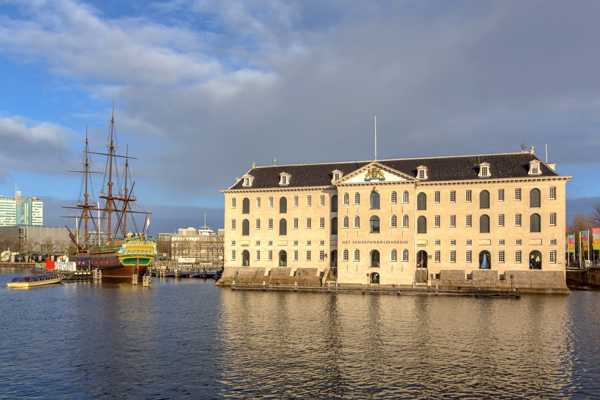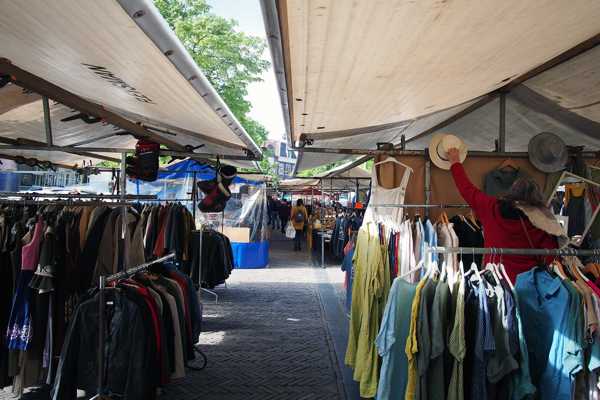Prinseneiland is 1 of 3 artificial islands in Amsterdam’s Centrum district. They are collectively known as Westelijke Eilanden, which translates to ‘Western Islands’.
This neighbourhood gives off a small village-like feel. You can go on a boat cruise, visit local shops, or explore its canal houses. It’s mostly known for its art scene, which draws in a multitude of creative minds, from actors and musicians to artists and furnituremakers. If you want to know more about the art scene in Amsterdam, Prinseneiland is a great place to start.
Brick homes with open shutters are a common sight around the neighbourhood. You can discover more about this architectural style by going on an architectural walking tour of this part of the city. Even without an itinerary, this little island is a wonderful place to visit at any point of your day.
Prinseneiland in Amsterdam - one of the highlights of 10 Most Popular Streets in Amsterdam (Read all about Amsterdam here)

A brief history of Prinseneiland
The Western Islands were originally called Vooreiland (Front Island), Middeneiland (Middle Island), and Achtereiland (Back Island). Prinseneiland, which was formerly Middeneiland, was renamed after the 3 Princes of Orange.
In the 17th century, this neighbourhood was an industrial area. The Dutch West India Company built a number of warehouses here to stock goods such as wine, tobacco, grain, and salt. Centuries later, the islands fell into a state of neglect and were gradually abandoned. After World War II, most of its residents didn’t return.
Eventually, local artists and bohemians took over this forgotten neighbourhood and revived it. It’s now a bustling residential and commercial area. To this day, many artists and bohemians reside and work here. Like many neighbourhoods in Amsterdam, Prinseneiland’s warehouses have been transformed into apartments, boutiques, and shops.

The highlights of Prinseneiland
Located west of Centraal Station, Prinseneiland is the smallest of the 3 Western Islands and is quiet and peaceful. Compared to a lot of neighbourhoods in the city, it’s not always packed with tourists, unless there’s a big celebration like a Pride parade.
Along the canals bordering Prinseneiland, you’ll find colourful moored boats and wooden drawbridges, which give the neighbourhood its old-world charm. Sloterdijkerbrug is one example.
As you cross the drawbridge, you’ll see one of the highlights of Prinseneiland, which is a traditional brick building with bright red shutters. Many who come here stop by for photos.
However, most people don’t know that right on the corner of Galgenstraat is an art piece by French visual artist Jerome Gulon. There are other works of art waiting to be discovered, tucked away in Prinseneiland’s small streets and alleyways.

How to get around Prinseneiland
To reach the charming island of Prinseneiland, you’ll have to cross a few little wooden bridges. The neighbourhood is small enough to be explored on foot. Everywhere you turn, you’ll see cobbled lanes, historic warehouses, gardens, wharves, and moored boats.
On a bike, you can cover more ground in a day, especially if you’re on a short vacation. You can explore Prinseneiland, as well as its neighbouring islands of Bickerseiland (formerly Vooreiland) and Realeneiland (formerly Achtereiland), on a bike tour.
The neighbourhood doesn’t have a lot of restaurants, cafés, pubs, and bars. Upside Down is one of a few in the area. It’s a Middle Eastern restaurant that’s well-loved for its falafel wrap and upside-down bowls. You can also go to Jordaan district if you’re feeling hungry, which is only a 5-minute walk away from this small oasis and offers more choice.
Another way to experience Prinseneiland is from the water. You can go on a private cruise and have an experience you’ll never forget.

Prinseneiland in Amsterdam
Location: 1013 LR Amsterdam, Netherlands



















